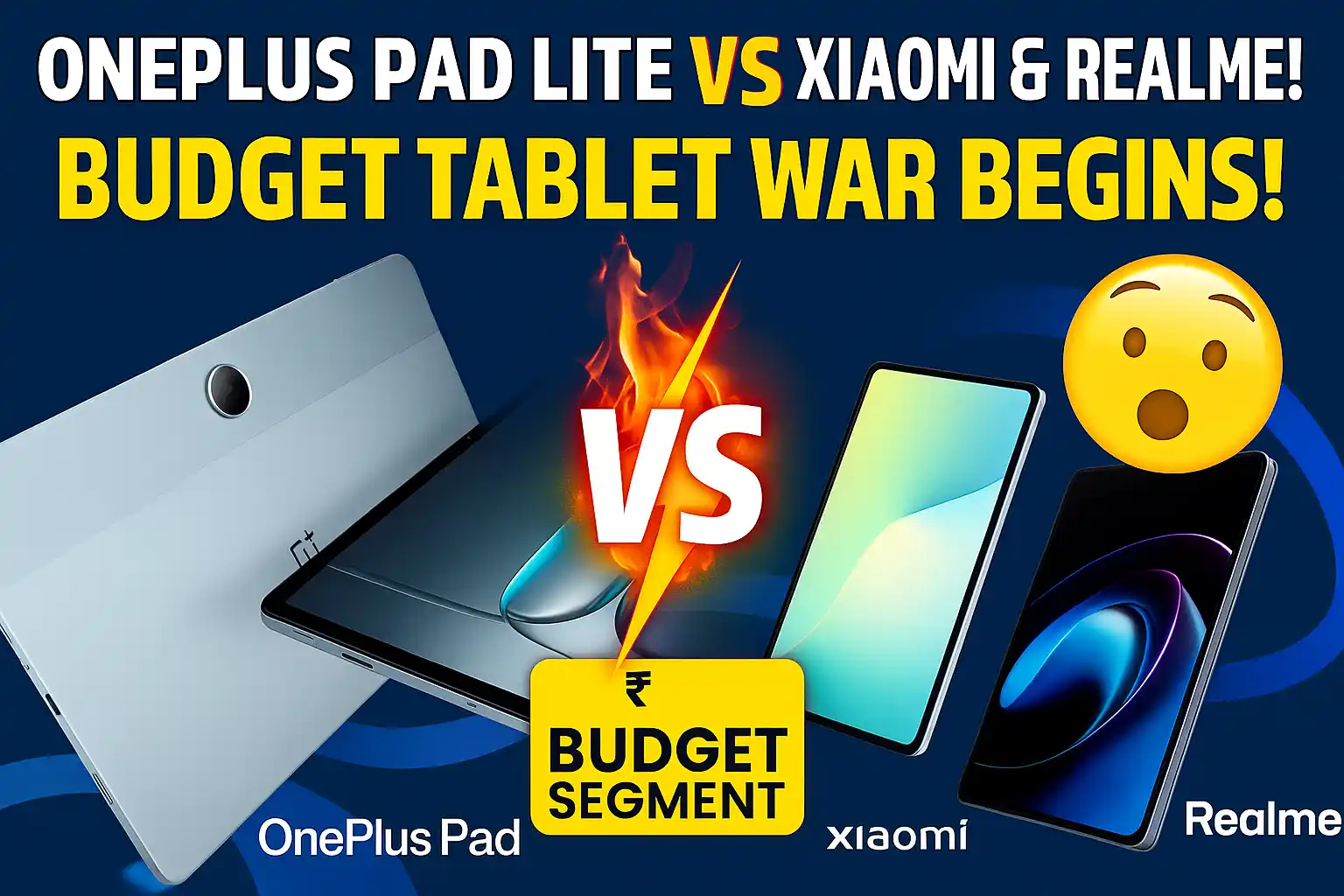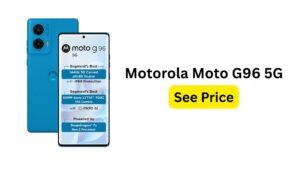India’s tablet market is booming, with significant year-on-year growth driven by demand for versatile devices and government initiatives. While premium and 5G tablets lead the charge, the budget segment remains crucial for cost-conscious Indian consumers who favor online purchases. OnePlus, a brand known for its smartphones, is set to enter this competitive space with the OnePlus Pad Lite on July 23, 2025. This device aims to be an affordable, feature-rich option. Xiaomi and Realme are established leaders, with Xiaomi holding a 13% market share in 2024 and Realme at 10.3% in June 2025. This report briefly examines if the OnePlus Pad Lite can challenge their stronghold.
Understanding the Indian Tablet Landscape: Trends and Preferences
The Indian tablet market grew 25% in 2024 and 15% in Q1 2025, with a projected 10-15% growth in 2025. This growth is fueled by rising demand for 5G and premium tablets, alongside digital transformation in sectors like education and travel. Online platforms are the preferred buying channel due to competitive pricing and EMI options, though physical stores remain important in smaller cities. As of June 2025, Samsung leads with 48.5% market share, followed by Apple (20.84%), Realme (10.3%), and Xiaomi (7%). Xiaomi showed remarkable 59% YoY growth in Q1 2025, while OnePlus grew 32% from a smaller base.
OnePlus Pad Lite: The New Contender’s Arsenal
The OnePlus Pad Lite features an 11-inch HD+ (1920×1200) LCD display with a 90Hz refresh rate and 500 nits brightness, certified for eye comfort. It’s powered by a MediaTek Helio G100 SoC with up to 8GB RAM and 128GB expandable storage. A key highlight is its large 9340mAh battery with 33W SuperVOOC fast charging. It includes 5MP front and rear cameras and quad speakers with Dolby Atmos. Running Android 15-based OxygenOS 15.0.1, it supports Wi-Fi, LTE, and Bluetooth 5.4. Expected to be priced around Rs. 19,990 in India , OnePlus positions it as an “affordable tablet with 4G connectivity, big battery”. While its brand equity is growing , its HD+ display is a potential disadvantage against competitors offering higher resolutions at similar prices.
Xiaomi’s Stronghold: Redmi Pad Series and Xiaomi Pad 6
Xiaomi and its Redmi sub-brand offer a strong portfolio. The Redmi Pad 2, launched June 2025, starts at Rs 13,999. It boasts an 11-inch 2.5K (2560×1600) LCD display with 90Hz refresh rate and 600 nits brightness. Powered by a MediaTek Helio G100 Ultra SoC , it handles daily tasks well but may struggle with heavy gaming. It has a 9000mAh battery with 18W charging , 8MP rear and 5MP front cameras , and quad speakers with Dolby Atmos. It runs Android 15-based Xiaomi HyperOS 2, praised for its clean UI and cross-device features.
The Redmi Pad Pro 5G, launched April 2024, starts at Rs 19,999. It features a 12.1-inch 2.5K (2560×1600) LCD with 120Hz refresh rate and a Snapdragon® 7s Gen 2 Mobile Platform. It has a 10000mAh battery with 33W fast charging and 8MP cameras.
The Xiaomi Pad 6, launched April 2023, starts from Rs 21,999. It sets an “affordable premium” benchmark with an 11-inch 2.8K (2880×1880) LCD display and a 144Hz refresh rate. It’s powered by a Snapdragon 870 SoC for smooth performance. It has an 8600mAh/8840mAh battery with 33W fast charging , 13MP rear and 8MP front cameras , and Dolby Atmos quad speakers. Xiaomi’s strategy of offering advanced features at competitive prices, coupled with HyperOS ecosystem integration, raises consumer expectations and poses a significant challenge.
Realme’s Value Proposition: Realme Pad and Pad Slim
Realme focuses on multimedia and portability at competitive prices. The original Realme Pad (Sept 2021, ~Rs. 17,999) has a 10.4-inch WUXGA+ display and MediaTek Helio G80 processor. It features a 7100mAh battery with 18W fast charging , 8MP cameras , and Dolby Atmos quad speakers. It runs Android 11.
The Realme Pad Slim (Nov 2023, starts Rs. 17,000) offers a refined experience with a 10.4-inch Full HD IPS display and the same MediaTek Helio G80 processor. It also has a 7100mAh battery, dual 8MP cameras, and immersive audio. It runs Android 12. Realme’s strength lies in its multimedia focus and aggressive pricing, but its older processors and slower Android updates are potential drawbacks compared to OnePlus and Xiaomi.
Head-to-Head: A Detailed Comparison
The OnePlus Pad Lite (expected ~₹19,990) competes directly with the Redmi Pad 2 (starting ₹13,999) and Realme Pad Slim (starting ₹17,000) , and is close to the Xiaomi Pad 6 (starting ₹21,999).
- Display: OnePlus Pad Lite’s HD+ display is a notable weakness against Redmi Pad 2’s 2.5K and Xiaomi Pad 6’s 2.8K displays, which offer superior sharpness for content consumption.
- Processor: OnePlus Pad Lite’s Helio G100 is comparable to Redmi Pad 2’s G100 Ultra for daily tasks, but both are outmatched by Xiaomi Pad 6’s Snapdragon 870 for demanding applications. Realme’s Helio G80 is less powerful.
- Battery & Charging: OnePlus Pad Lite’s 9340mAh battery with 33W fast charging is a strong point, surpassing Redmi Pad 2’s 9000mAh/18W and Realme’s 7100mAh/18W. Xiaomi Pad 6 also offers 33W charging.
- Software: OnePlus Pad Lite launches with Android 15-based OxygenOS , offering a clean experience. Redmi Pad 2’s HyperOS 2 (Android 15) provides strong ecosystem integration. Realme’s older Android versions (11/12) are a disadvantage.
- Connectivity: OnePlus Pad Lite offers LTE , a key feature for on-the-go users, similar to some Redmi Pad 2 and Realme Pad Slim variants. Xiaomi Pad 6 is Wi-Fi only.
The Verdict: Can OnePlus Pad Lite Carve Its Niche?
The Indian budget tablet market is fiercely competitive. Xiaomi’s Redmi Pad series and Xiaomi Pad 6 offer aggressive pricing, high-resolution displays, and capable processors, backed by a cohesive HyperOS ecosystem. Realme focuses on essential multimedia experiences at competitive prices, though with older hardware and software.
The OnePlus Pad Lite enters with a strong brand name, a large battery, fast charging, and a clean OxygenOS experience. However, its HD+ display resolution and MediaTek Helio G100 processor may struggle to stand out against Xiaomi’s superior display specifications at similar or lower price points.
Ideal User for Each Tablet:
- OnePlus Pad Lite: For users prioritizing a clean Android experience, long battery life with fast charging, and trust in the OnePlus brand, especially those needing LTE connectivity.
- Redmi Pad 2: Best for value-conscious consumers seeking a sharp 2.5K display and immersive audio for entertainment and light productivity at an aggressive price.
- Xiaomi Pad 6: For users demanding high performance (Snapdragon 870) and a premium 2.8K 144Hz display for intensive productivity and multimedia.
- Realme Pad / Pad Slim: Suitable for entry-level users or students needing a basic, affordable device primarily for media consumption and online learning.
Challenges and Opportunities for OnePlus:
- Challenges: Stiff competition from Xiaomi’s feature-rich, aggressively priced offerings; potential perception of lower value due to HD+ display.
- Opportunities: Leveraging its strong brand loyalty and reputation for a smooth OxygenOS experience; practical advantages like its large battery and 33W fast charging; and the inclusion of LTE connectivity.
The OnePlus Pad Lite’s success will depend on its ability to deliver a polished, reliable user experience and effectively leverage its brand appeal, rather than competing solely on raw specifications.


